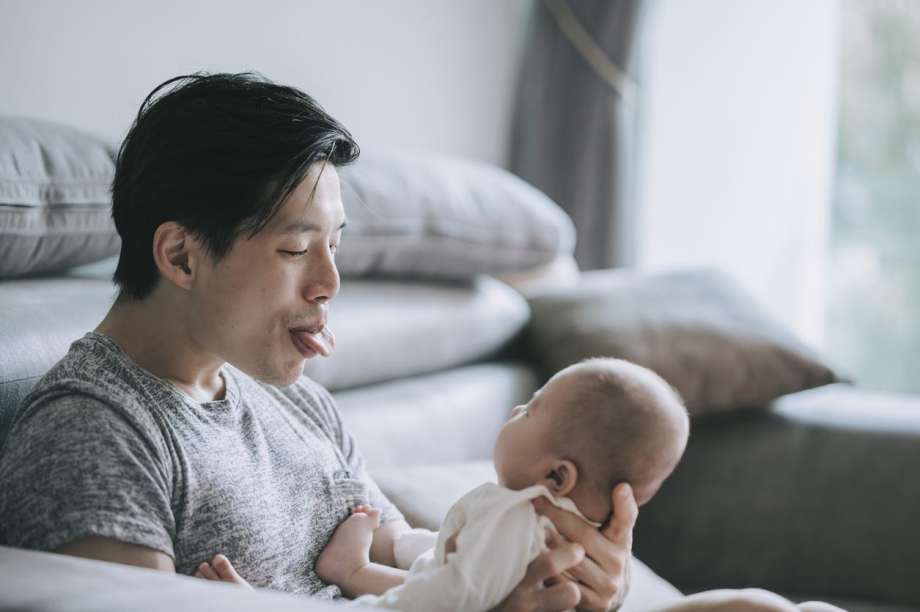First Toys: Faces and Voices

First Toys: Faces and Voices
Toys aren't always colorful plastic shapes you buy at the store. Almost anything can seem like a toy to your newborn. Before she can even hold a conventional toy in her hand, she'll become infatuated with two toys you didn't know you had: your voice and face. Your baby will learn and love the sound of your voice almost immediately. And a game of making funny faces could occupy her for hours.
Talking to Your Baby
One of the best ways to teach your baby is to talk to her. Through hearing your voice, she will learn a lot about language and other rhythmic patterns in speech far before she can use these skills herself. She will also pick up tone and emotion in your voice.
You may have spent time talking to your baby before birth. Maybe your husband even had a few one-sided conversations with her through your belly. Immediately after your baby was born, you might have talked to her a little as well. Perhaps you told her how happy you were to finally meet her. Talking to your baby in the hours and days that follow these initial conversations is a natural continuation of your relationship with her.
The question is, what do you have to talk about with a newborn? If she can't respond, how can you make effective conversation? For many new parents, talking to their babies does not come easily at first. To ease into it, just try giving her a rundown of her daily activities: "It's bath time! Let's get you undressed. First we take off your shirt. Now it's time for your diaper. Feel the warm water? Do you like the water?"
Over time, the conversations will become more natural and your baby will seem more and more interested in the words you say. Your baby will learn to understand not only patterns of speech, but schedules as well. Soon she'll associate all your babbling about getting undressed with bath time.
E Fact
Studies have shown that babies as young as a few hours old will imitate faces and stick out their tongues. The sooner you can engage your little one's attention in this way, the better. Making funny faces can be your first form of parent-child communication. How much fun is that?
Singing to Your Baby
When it comes to your baby, there are no singing lessons needed. Your baby doesn't care if you hit the notes or get the words right; she simply wants to hear the musical quality of your voice. Babies love to be sung to sleep with a soft lullaby or hear a playful tune while they bounce on your knee. Don't get embarrassed about singing to your baby. You'll soon find it's even easier than singing in the shower.
Making Faces
Your face is such a cool toy! Not only will your child love to watch and mimic it, but it doesn't cost a penny and it can't break. At first, your little one might just stare at you as you make silly faces, but as time goes on, she'll start reaching for your face and even imitating the funny faces you make at her.
In addition to making silly faces, try overexaggerating different emotions to teach your baby about feelings. Show her what a huge grin looks like and then say "happy." Show her looks of anger, surprise, and sadness, too. Your baby will get a huge kick out of watching your one-man show and may even try to mimic you right away.